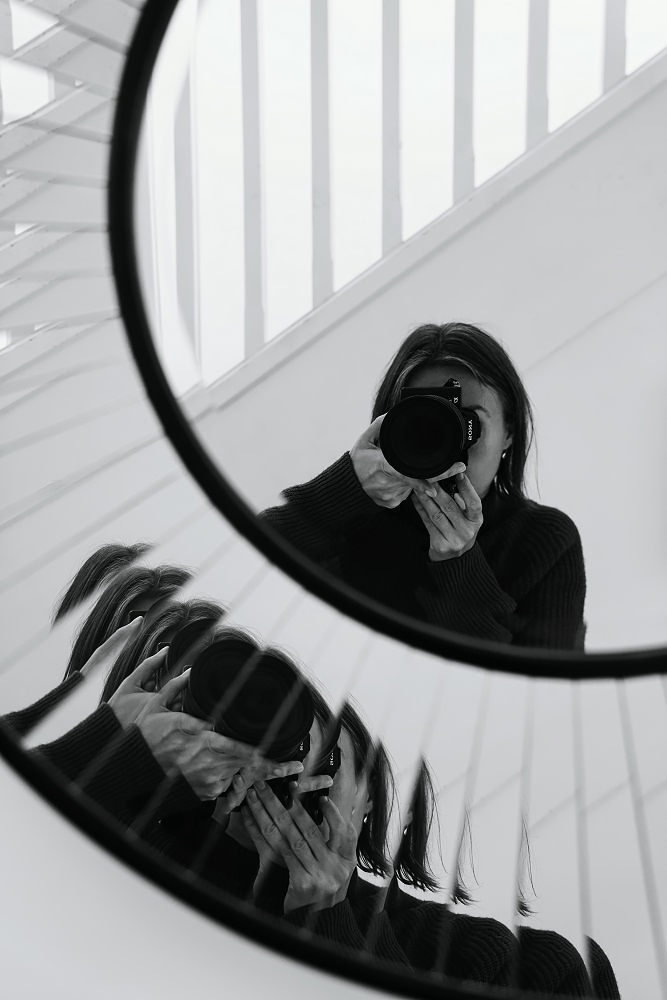A native of Poland, Kinga Owczennikow is an art photographer who considers her practice as a collaboration with the world. Kinga spent most of her adult life in metropolises like Hong Kong, London, Ho Chi Minh City or lesser known places such as Tirana or Paro, in the Himalayas. Having the outsider/insider point of view has been especially valuable to her photographic practice throughout the years. This constant geographical movement permitted her to retain the innocence of curious and attentive eyesight, at the same time gradually building an extensive experience of the wider world. Kinga is currently based in the Bay Area, in California.
Kinga first studied photographic theory and practice at the Warsaw School of Photography. She holds a BA (Hons) in Photography from the University for the Creative Arts in the UK. Kinga is an Associate of the Royal Photographic Society, a member of the Center of Photographic Art and the Griffin Museum of Photography. She is also a part of RPS’s Women in Photography group.
Kinga had a solo exhibition “The secret paths of Hong Kong” at the Asia and Pacific Museum in Warsaw, in 2011. She was a finalist of the Mediterranean Spirit at the PhotoMed Awards, 2016, and a finalist in the Association of Photographers Student Awards 2019, in the category Places (single photo) and the AOP Student Awards 2020 in the category Things (series). Her photographic work has been exhibited in group shows in the UK, Hungary, France, Spain, Italy, Netherlands, Greece and the United States. 30 of her photographs, including the cover image were featured in Tom LeClair’s novel “Passing Again”, published by I-BeaM Books (2022). Most recently, two of her photographs were selected as part of the 2023 International Juried Exhibition held at the historic CPA in Carmel-by-the-Sea.
Framing the World
All photographs frame the world. “Framing The World” presents photographs with internal frames, how they sharpen focus on the world and refine viewers’ understanding of viewing - of both the world and photographs. Frames within the photograph’s frame suggest that the photograph self-consciously occupies art space - close viewing space - and these frames invite analysis, interpretation, and appreciation. Internal frames can attract and resist, reveal or deceive, imply their own limitations. Even imply viewers’ limitations, the cognitive frames through which they process the world.
by Tom LeClair
